
The Magazine of The College of Sciences at The University of Texas at San Antonio VOLUME 11 | SPRING 2024
Making Science Accessible [ PAGE 6
CATALYST
]
Interim Dean: John Frederick, Ph.D.
Editor: Ryan Schoensee
Contributing Editor: Lauren Crawford
Graphic Designer: Coral Díaz
Copyeditor: Ashley Festa
Student Writers: Adine Bahambana, Kimberly Baker, Victoria Garza, Kendall Green, Amanda Korsah, Md Mohsin, Pelle Munoz, Gauri Raje, Alex Roush, Sara Timmons
Student Artists: Jaline Atenco, Xiaodan Wang
COLLEGE ADMINISTRATION
Associate Dean for Graduate Studies: Nicolas Large, Ph.D./HDR
Associate Dean for Research: Jose Lopez-Ribot, Pharm.D./Ph.D.
Assistant Dean for Operations: Tracy Beasley, Ph.D.
Associate Dean for Undergraduate Studies: Timothy Yuen, Ph.D.
Assistant Dean for Fiscal Administration: Mike Findeisen
Assistant Dean for Instruction, Assessment, and Faculty Development: Terri Matiella, Ph.D.
Contents
CATALYST
The College of Sciences One UTSA Circle San Antonio, Texas 78249
www.utsa.edu/sciences COVER ILLUSTRATION Xiaodan Wang Message from the Dean 1 Congratulations 2 Good to Know: Xinting Yu 3 The College at a Glance 4 Making Science Accessible 6 to Students Making Science Accessible 8 to the Community Making Science Accessible 10 to Persons with Disabilities The COS Student Success 14 Center’s Four-Year Plan Faculty Spotlight: Fidel Santamaria 16 Awesome Alum: Eric Johnson Chavarria 17 #ThisIsWhatAScientistLooksLike 18 Giving 22 Peek Inside Two Research 24 Core Spaces twitter.com/UTSASciences facebook.com/UTSASciences instagram.com/utsa.collegeofsciences Catalyst is created for faculty, students, alumni and friends of the college, and it highlights achievements in research, scholarship and community outreach. Catalyst is the biannual publication of the College of Sciences at The University of Texas at San Antonio.
(210) 458-4450
Student Writers
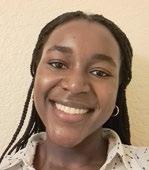
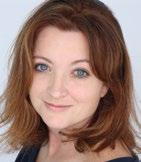


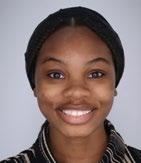
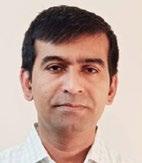



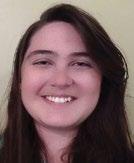
Adine Bahambana Computer Science
Kimberly Baker
Developmental and Regenerative Sciences
Victoria Garza
Biomedical Engineering
Kendall Green
Developmental and Regenerative Sciences
Amanda Korsah
Microbiology & Immunology
Md Mohsin Physics
Pelle Munoz
Environmental Science
Gauri Raje Biotechnology
Alex Roush Environmental Science
Sara Timmons Biology
Student Artists
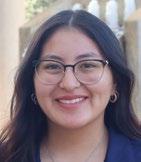

Message from the Dean

Greetings from the College of Sciences! Earlier this spring, David Silva stepped down as dean of the College of Sciences to pursue new research opportunities within the Department of Physics and Astronomy. A national search is underway for the college’s next dean, and to assist with the transition in college leadership, I assumed the role of interim dean on March 9. I am excited to continue cultivating a college that is supportive of our students, faculty and staff.
First, I’d like to express my gratitude to Dr. Silva for his leadership and numerous contributions during his five-year tenure as dean. He has played a pivotal role in elevating the College of Sciences to a national standing.
Second, to share a little about my personal background, I am a native of San Antonio, and I witnessed the origins of UTSA when I was a high school student. I am now a professor in the Department of Chemistry, having joined UTSA in 2008 as provost and vice president for Academic Affairs and serving in that position until 2016. Since I have been here, I have also served as interim vice president for research from 2012 to 2013 and as interim chair of the Department of Mathematics from 2018 to 2019. Prior to joining UTSA, I spent more than 20 years at the University of Nevada, Reno, where I was a chemistry faculty member, department chair and, from 2001 to 2007, executive vice president and provost.
I’m thrilled to present this issue of Catalyst to you, as it highlights some of the research-related organizations and events led by our distinguished faculty, who are pioneers in their fields. These events—including vaccine collaborations, brain health workshops and solar eclipse viewings—generate valuable opportunities to bring science to our community, to collaborate with researchers outside of UTSA and to provide our students with a platform to present their research while also establishing future professional connections.
Thanks to my San Antonio origins, I care deeply about the success of UTSA, especially as it enhances the local community and educational opportunities for students in this region. Through their creative activities and collaborations, our faculty help position San Antonio and UTSA as an invaluable scientific hub to the nation and the rest of the world.
Jaline Atenco
Healthcare Management
Xiaodan Wang
Chemistry
Sincerely,
JOHN FREDERICK, PH.D. Professor, Chemistry
Interim
Dean, College of Sciences
Spring 2024 | Catalyst | UTSA 1
Congratulations
u Lacy Barton (Neuroscience, Developmental and Regenerative Biology) and her research team discovered a new role of juvenile hormones in primordial germ cell migration. Barton’s lab explores how primordial germ cells–egg and sperm precursors–fulfill their unique potential to generate fertile and healthy offspring.
u Angela Speck (Physics and Astronomy) was a guest on the inaugural episode of Planet UTSA, a special-edition podcast series previewing the April solar eclipse.
u UTSA was selected as the primary recipient of a four-year, $935,000 grant from the U.S. Department of Agriculture’s (USDA) National Institute of Food and Agriculture to establish the Coalition for Regenerative Ecologies and Agriculture. This coalition, co-located in San Antonio and in Veracruz, Mexico, will train at least 40 undergraduate and graduate students for a wide range of leadership-track careers in regenerative agriculture by developing their skills in global-resource management, community-engaged research and transcultural literacy. Amelia King-Kostelac (Integrative Biology) is the principal investigator of the project, and the team includes Jennifer Smith (Integrative Biology).
u Karl Klose (Molecular Microbiology and Immunology) joined the National Academy of Inventors’ class of 2024 senior members in recognition of his impact on the medical industry.
u Principal investigator Allison Veach (Integrative Biology) and co-principal investigator Saugata Datta (Earth and Planetary Sciences) received a four-year, $489,000 grant from the USDA to study whether cost-effective microbiological techniques can provide accurate data for soil quality in San Antonio.
u Graduate student Mason Leist (Physics and Astronomy) led a study, published in The Astronomical Journal, on the best method to improve images obtained by the James Webb Space Telescope (JWST) using a mathematical approach called deconvolution. He was tasked by the Galactic Activity, Torus, and Outflow Survey (GATOS), an international team of scientists, to enhance JWST observations of the galaxy NGC 5728. The GATOS team, co-led by Leist’s doctoral adviser, Chris Packham (Physics and Astronomy), was awarded time on the JWST to conduct research on black holes.
u The “magic islands” on Titan, Saturn’s largest moon, are likely floating chunks of porous, icy organic solids, a new study by Xinting Yu (Physics and Astronomy) found,
pivoting from previous work suggesting they were gas bubbles. Yu’s study was published in Geophysical Research Letters, the American Geophysical Union’s journal for high-impact, short-format reports with immediate implications spanning all Earth and space sciences.
u The publications division of the American Chemical Society (ACS) appointed Kirk S. Schanze (Chemistry) as the new deputy editor for ACS Central Science, the diamond open access journal sponsored by ACS.
u Thanks to a three-year, $450,000 grant from the Max and Minnie Tomerlin Voelcker Fund, a new undergraduate research experience in pharmaceutical chemistry will enable students in South Texas to gain hands-on training in drug discovery and development before graduation. Led by Doug E. Frantz (Chemistry), the program will offer an immersive learning opportunity to a select group of students from universities in South Texas beginning this summer.
u Jesús Romo ’10, ’12, ’18 (Molecular Microbiology and Immunology) was selected by the American Society for Microbiology to receive the 2024 William A. Hinton Award for Advancement of a Diverse Community of Microbiologists. The award recognizes outstanding contributions in fostering the research training of minorities and increasing diversity in microbiology.
UTSA | Catalyst | Spring 2024 2
Good to Know: Xinting Yu
By Sara Timmons
Xinting Yu earned her Ph.D. in planetary science from Johns Hopkins University, focusing on the atmospheric and surface processes of Titan, Saturn’s largest moon. Yu is now an assistant professor in UTSA’s Physics and Astronomy Department where she leads research on the atmospheres of Titan and exoplanets, which are planets that orbit a star outside the solar system.
“My work integrates theoretical modeling with laboratory experiments to understand the chemistry and physics shaping these distant worlds,” Yu said.
One of Yu’s projects is studying a phenomenon on Titan called “magic islands,” which were first discovered in 2014. There were once theories that these islands were composed of suspended solids or even nitrogen gas bubbles, but recent research from Yu suggests that they are likely floating chunks of porous, icy organic solids. Yu speculates that the relationship between Titan’s lakes, atmosphere and surface deposits can decode the formation of these peculiar islands that have stumped scientists for a decade.
In recognition of her research, Yu was selected by NASA for the Planetary Science Early Career Award (ECA), which aims to advance bright young scientists by increasing their involvement in the planetary science community. The award provides up to $200,000 over five years, which Yu plans on using to organize a Planetary Material Characterization Facility at the UTSA Main Campus.
UTSA’s modern facilities, collaborative environment and commitment to excellence enticed Yu to pursue her research at UTSA. “Every day brings a new challenge and a chance to inspire future scientists,” she said. “What I find most fulfilling about my role at UTSA is the opportunity to explore the unknowns of our solar system and beyond.”
Outside of the world of academia and research, Yu enjoys running and participating in non-competitive sports. At home, Yu likes to spend time with her cat, Cookie. Activities like these provide Yu a rejuvenating break from work. “This allows me to return to my research with a clear mind and new perspectives,” she said.
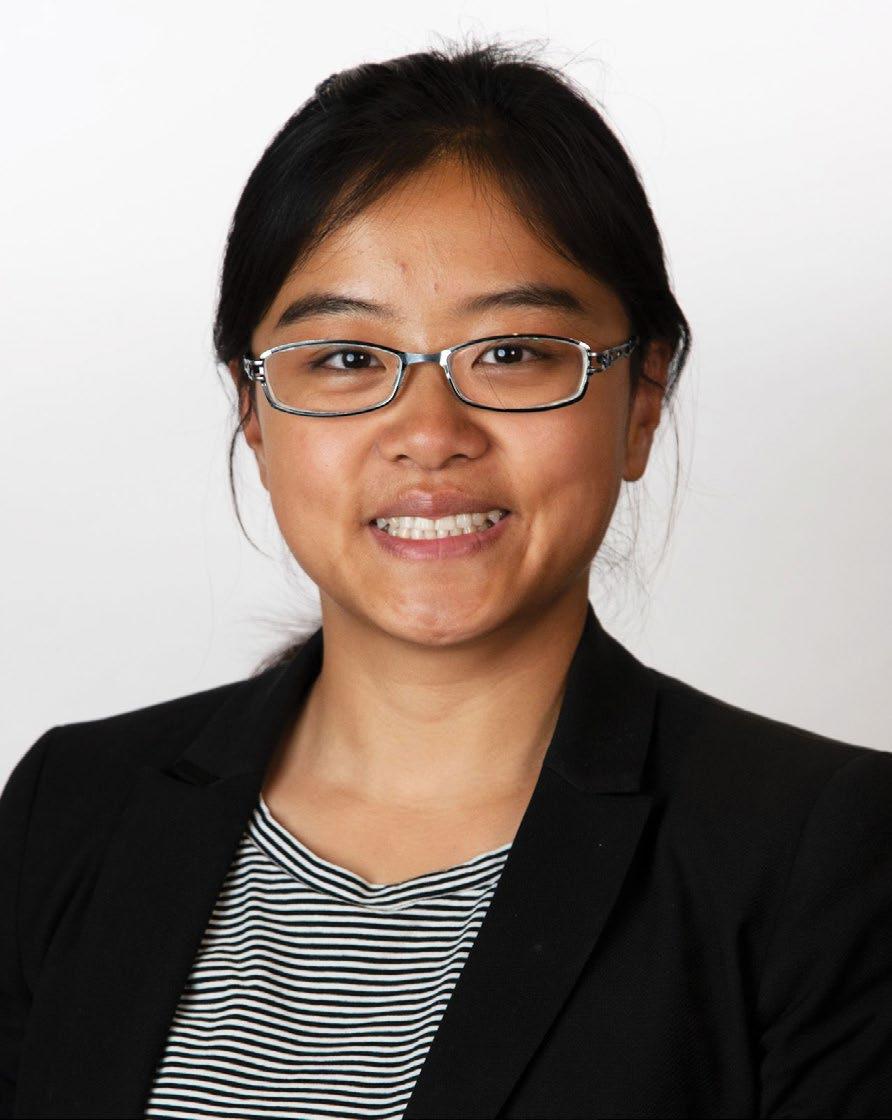
Yu’s Recommended Reading:
u Crying in H Mart by Michelle Zauner
“This memoir transcends personal grief, exploring identity and heritage. Essential reading for understanding the complex narratives that shape us.”
u Helgoland: Making Sense of the Quantum Revolution by Carlo Rovelli
“The best book to get someone interested in, but not intimidated by, quantum mechanics. A mustread for those curious about the fundamentals that govern our world.”
u Know My Name by Chanel Miller
“This memoir is a brave and honest journey through trauma, offering hope and understanding. A vital read for learning about resilience and the power of voice.”
POP QUIZ ANSWER: About 2,000 Spring 2024 | Catalyst | UTSA 3
The College at a Glance
Fall 2023 Enrollment
Degree Program
Enrollment by Department
6,190 science students were enrolled for Fall 2023, an increase from 5,827 in Fall 2022. PHYSICAL SCIENCES Chemistry 366
COMPUTER/ MATHEMATICAL SCIENCE
Computer Science 2,077 Mathematics 206
LIFE SCIENCES
Integrative Biology 2,695 Molecular Microbiology & Immunology 252 Neuroscience, Developmental & Regenerative Biology 303
4
Earth
Physics and Astronomy
Fall 2023 Fall 2022 5,827 6,000 3,000 0 6,190 UTSA | Catalyst | Spring 2024
& Planetary Sciences 98
192
Christian Villarreal
SCIENCE MENTOR, COS SSC, BIOLOGY

“The UTSA College of Sciences Student Success Center (SSC) serves as a comprehensive hub dedicated to enhancing the academic and career preparedness of students. Through a range of weekly events, the center actively facilitates connections between students and potential employers, acquaints them with campus resources, and cultivates skills essential for success in the job market. Utilizing the COS four-year plan, students can visually monitor their academic journey and milestones. Those who successfully fulfill the requirements outlined in their four-year plan checklist are celebrated for their achievements with a special pin, stole, and a medal during our banquet held at the semester’s end.”
Degrees Awarded
The number of students graduating with a science degree grew from 993 in academic year 2021-2022 to 1,092 in 2022-2023.
Infographics: Jaline Atenco
DOCTORATE 148 MASTER’S 907 BACHELOR’S DEGREES
37
Spring 2024 | Catalyst | UTSA 5
Read about what the SSC is doing to help students succeed on page 14.

Making Science Accessible to Students
Student organizations are creating inclusive environments for
Roadrunners
to explore their scientific interests.
By Victoria Garza
Several student organizations, including Volunteers Around the World, The Green Society and Womxn in Medicine, are promoting the personal and professional development of their members with a focus on accessibility. Through public events and community outreach, these organizations are creating opportunities for students to engage with science in meaningful ways.
Biology senior Mariana Suarez-Martinez is a founding member and the president of Volunteers Around the World (VAW). “VAW is committed to global public health and is open to everyone who has a vested interest in sustainable, long-term and intentional health care around the world,” said Suarez-Martinez.
VAW’s various outreach efforts aim to assist underserved communities in San Antonio and beyond. VAW offers participants opportunities to learn the basics of health care outreach, such as how to take vitals, and it sponsors internships for students to experience the health care industry abroad.
“We provide students with the opportunity to see different health care systems, so you’re getting that cultural competency that is super important for whenever you’re treating the world around you, being able to connect with other people and then being able to talk with one another,” Suarez-Martinez said.
VAW encourages all students to participate in the organization’s mission. “Public health impacts the world around us, and it impacts us in day-to-day life,” said Suarez-Martinez.
The Green Society is dedicated to fostering community engagement among students who are passionate about sustainability. Their initiatives range from hosting guest speakers to organizing recreational team-building activities such as trash pickups, maintaining the community garden and group hikes. The Green Society focuses on creating a supportive environment where members feel comfortable voicing their opinions and exploring their interests.
UTSA | Catalyst | Spring 2024 6

“The Green Society started as a passion project a long time ago, and it seems that whatever administration runs it, it changes and modifies to that administration,” said computer science senior Zoe Gray, president of The Green Society. “And right now, our club is a sustainability club, and our goal is to unite like-minded people who have a passion for sustainability. We’re trying to build a large community on campus regardless of their major or their age.” Gray says she is most proud of The Green Society’s community garden. Its most recent harvest weighed in at 76 pounds and was donated to UTSA’s food pantry.
Womxn in Medicine (WIM) provides a supportive environment for pre-health students while bridging the gap between students and health care knowledge. “WIM promotes experiential learning by engaging with health care providers and researchers,” said neuroscience senior Joann Phelps, who serves
as WIM’s fundraising coordinator. WIM also aims to promote the importance of mental health. “One particularly impactful experience that stands out for WIM is our Mental Health Matters fundraiser that we held during the fall semester with the aim of raising awareness about suicide prevention and reducing the stigma about seeking help,” Phelps said.

COVER STORY
The COS made science more accessible to the Roadrunner community during the total solar eclipse on April 8.
UTSA Students in Volunteers Around the World (VAW medical chapter) practice using stethoscopes in a classroom setting.
Spring 2024 | Catalyst | UTSA 7
Making Science Accessible to the Community
College of Sciences faculty are driving scientific accessibility and encouraging scientific discourse and innovation through conferences, workshops and public outreach.
By Alex Roush
Faculty across the College of Sciences are participating in, hosting and organizing workshops and conferences here in San Antonio and all over the world. This is key for effective scientific communication and an important step in making science accessible to everyone in the community. UTSA’s involvement in these events benefits students, the university and the city. Scientists and faculty interacting with colleagues and other researchers can lead to new, innovative ideas and solutions. These events allow students to present their research and build professional connections, and they are valuable opportunities to represent UTSA and showcase San Antonio’s position as a scientific hub.
Angela Speck, professor and chair of the Physics and Astronomy Department, has encouraged this type of scientific accessibility for a decade. Speck also serves as co-chair of the American Astronomical Society’s Solar Eclipse Task Force. As part of this role, she has led two virtual workshops and three in-person workshops since her arrival at UTSA in 2019. “The purpose of these workshops is to help prepare communities for impending solar eclipses, including education, emergency management, tourism and transportation issues,” she said. More information about Speck’s eclipse workshops can be found at eclipse.aas.org/workshops.
Speck led UTSA’s official eclipse-viewing party in April at the East Recreation Field Complex, and around 2,000 UTSA students, faculty and staff attended. “The total solar eclipse lasted for 2 minutes and 25 seconds and was awesome in the truest sense of the word,” she said. Attendees enjoyed an informative community viewing experience narrated by Speck, and they received special edition solar viewing glasses.
Speck also participated in STEM outreach related to the annular and total eclipses that were visible from San Antonio. During visits to multiple schools across Bexar County, the Hill Country and the Rio Grande Valley,
she and a large group of UTSA students gave presentations across all K-12 grades about what solar eclipses are, why they happen and how science is conducted during eclipses. She also conducted demonstrations, such as a fun light and color activity, to encourage student learning even further. In addition to school visits, Speck has given presentations at 24 San Antonio Public Library branches and to local service clubs.
In the Department of Molecular Microbiology and Immunology, professor Karl Klose addresses the concept of scientific accessibility through his involvement with the biennial International Conference on the Biology of Vibrios (ICBV). ICBV is the only international conference that focuses on the biology of Vibrio bacteria, a group of microbes that can cause foodborne infection, including the deadly disease cholera. The study of Vibrios is evolving due to global warming’s impact on microbes. “The influence of global warming is having a challenging impact on our world, including microbes,” said Klose. “Previously tamed by cold temperatures, new pathogens are emerging during unexpected heat waves, resulting in diseases such as cholera, food poisoning and the death of aquatic animals. Vibrio researchers are trying to understand the biology and biochemistry underlying the Vibrio arsenal in order to develop means to combat these threats to human health. Due to the complexity of their behaviors, Vibrios have become a paradigm in microbiological research for understanding both bacterial ecology and bacterial pathogenesis. For these reasons, it is important for these communities to join together to discuss Vibrios across all realms of their impact.” Klose has been on the organizing committee of the Vibrio conferences since they began and has helped organize previous conferences in Belgium, Brazil, Spain, Scotland, France, Canada, and Chicago. He is currently chairing the organizing committee for the upcoming Vibrio conference that will be held in Peru in October.
In January, UTSA’s Brain Health Consortium (BHC) hosted a Brain Health Dream Project workshop to strengthen the BHC’s research community
UTSA | Catalyst | Spring 2024 8
and to generate ideas for bold, new collaborative projects. All BHC faculty members were invited to participate in the workshop, and over 40 people attended. Workshop attendees participated in a series of breakout sessions focused on the same question: “If money and time frame were no object, what ‘dream projects’ would we be collectively pursuing?” The faculty identified themes such as community wellness/health, tools and technology, and neurological disorders. Following the workshop, the BHC reached out to its members to identify faculty who might be interested in leading or participating in seed grant proposals to pursue these projects or other large, transdisciplinary research projects around brain health. The project ideas will be given priority consideration for FY25 (Fiscal Year 2025) Seed Grant funding and support from the UTSA Office of Research grant development team.
Janis Bush, a professor in the Department of Integrative Biology, is also passionate about representing scientific discourse and increasing accessibility of information. Last year, she served on a panel moderated by Excelencia in Education, an organization that seeks to accelerate Latino student success in higher education. “The panel showed educators how to encourage Latino student success by incorporating evidencebased practices that can intentionally serve Latino and post-traditional students,” she said. These same practices benefit all students. Bush and other panel participants showed educators how to implement those practices on their own campuses. Bush also attends workshops as part of the Sloan Foundation’s Equitable Pathways program, which aims to equip educators with the ability to create more inclusive STEM graduate environments.
UTSA also encourages accessibility in scientific discourse by hosting events for professionals. Cyber-Physical Systems and Internet-of-Things (CPS-IoT) Week is an annual international event that brings researchers from around the world together and was held at the UTSA Main Campus in 2023. “During CPS-IoT Week 2023, more than 680 participants from more than 30 countries and regions attended the event,” said event co-chair Dakai Zhu, professor and assistant chair of the Department of Computer Science. Participants enjoyed talks on state-of-the-art research results from five top international conferences and more than 15 workshops and tutorials. CPS-IoT Week also featured the 12th annual F1TENTH Autonomous Grand Prix competition, a semi-regular competition organized by an international community of researchers, engineers and autonomous systems enthusiasts. Teams built a 1:10-scaled autonomous race car according to a given specification and wrote software for it to fulfill the objectives for the competition: Don’t crash, and minimize laptime.
Another important aspect of accessible scientific communication is participation in local scientific organizations. Speck is part of a local STEM advocacy group known as the Alamo STEM Ecosystem (ASE). The ASE includes museums, libraries, formal and informal educators, as well as local tech-sector businesses. “The aim of the ASE is to bring together all the stakeholders who are interested in ensuring STEM education is connected across all levels of education, including not only K-12 and higher ed, but also informal educational settings such as museums and libraries,” she said. “As part of this work, the informal education working
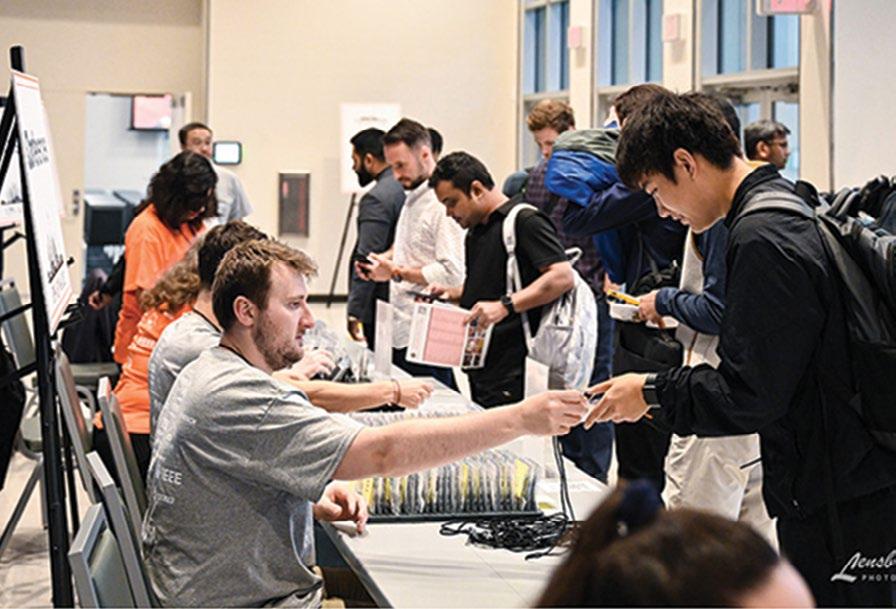
group, which includes members from the Witte Museum, the Doseum, the San Antonio Public Library, the Southwest Research Institute, state parks and more, has become the eclipse team and has been working together to ensure that the city is well-served for both the annular and total eclipses. We have been sharing resources and providing training for volunteers to ensure that all viewing sites are safe and that people will get the most out of their experiences.”
Juan B. Gutiérrez, professor and chair of the Department of Mathematics, is participating in the development of MASA, the Mathematics Alliance of San Antonio, which is still in its planning stage. MASA aims to improve student access to mathematics and increase participation in mathematical sciences and support academic success. MASA is scheduled to launch officially during the sectional meeting of the American Mathematical Society, which will be held in San Antonio in September.
Computer science doctoral student Saniya Vahedian Movahed is working with Fred Martin, professor and chair of the Department of Computer Science, to introduce children to artificial intelligence (AI) and study their relationship to this technology. “In our recent project, we built a chatbot called Ask Me Anything utilizing the ChatGPT API to explore children’s attitudes toward AI,” said Movahed. “This work has shown us how children not only learn from the chatbot but also develop a high level of trust in it. Such interactions have been eye-opening, highlighting both the potential of AI as an educational tool and the significant gaps in children’s understanding of the AI technology.”
Martin’s lab also welcomes the opportunity to share its innovations with the local community. In fall 2023, his lab hosted 44 middle school students from San Antonio’s North East Independent School District. The students interacted with three AI demos the lab developed. “Seeing the students eagerly engage with and enjoy interacting with our tools was very rewarding,” said Movahed. “Children interact with AI daily through various gadgets and apps—often without realizing it—and that AI makes decisions for them. This makes it essential to include AI education early in their learning journey so that they can become a critical consumer of AI and be well-prepared for their future careers.”
Spring 2024 | Catalyst | UTSA 9
Leading researchers from around the world gathered to attend the 2023 CyberPhysical Systems and Internet-of-Things (CPS-IoT) Week, an annual international research event that was held on the UTSA Main Campus.
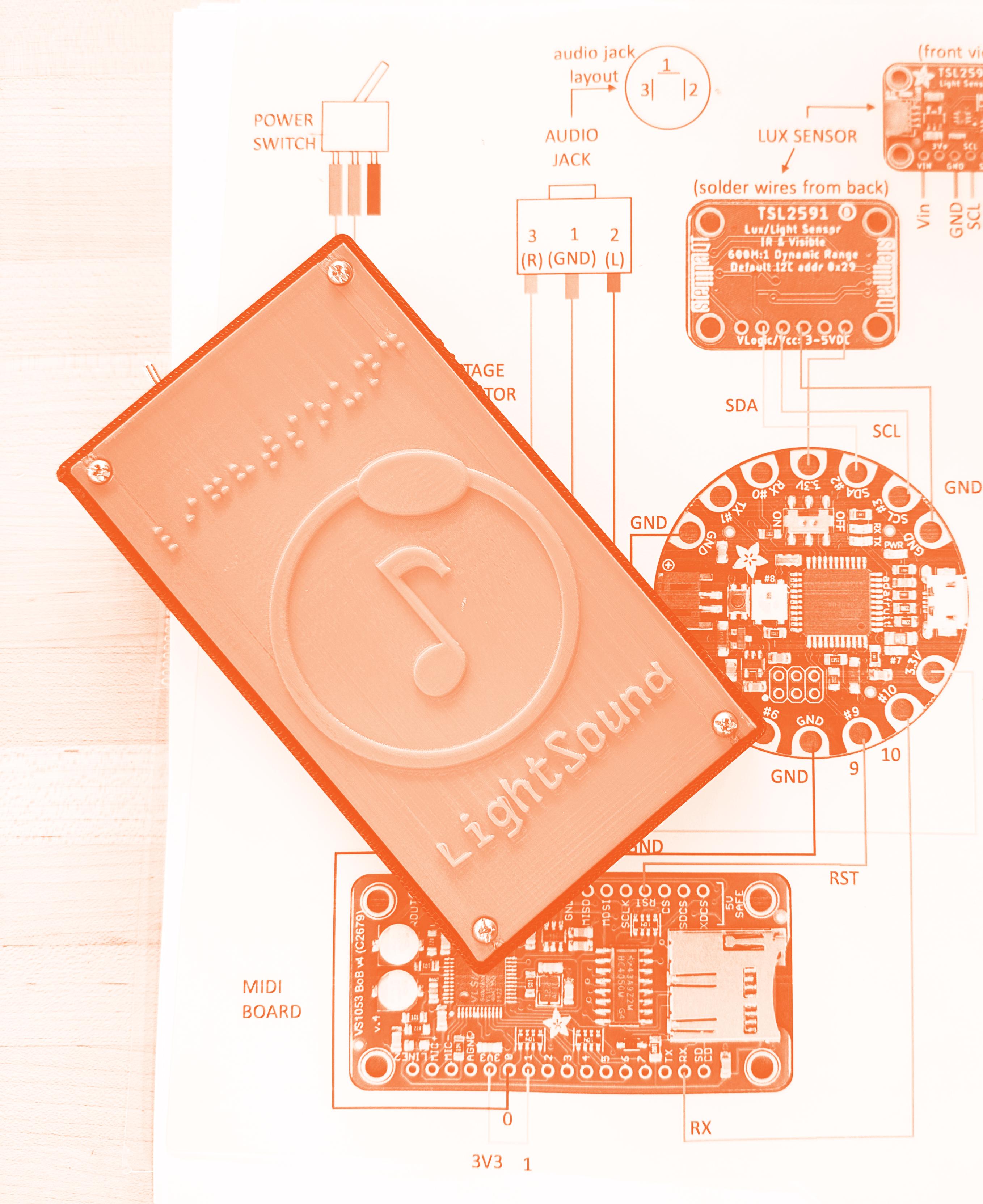
UTSA | Catalyst | Spring 2024 10
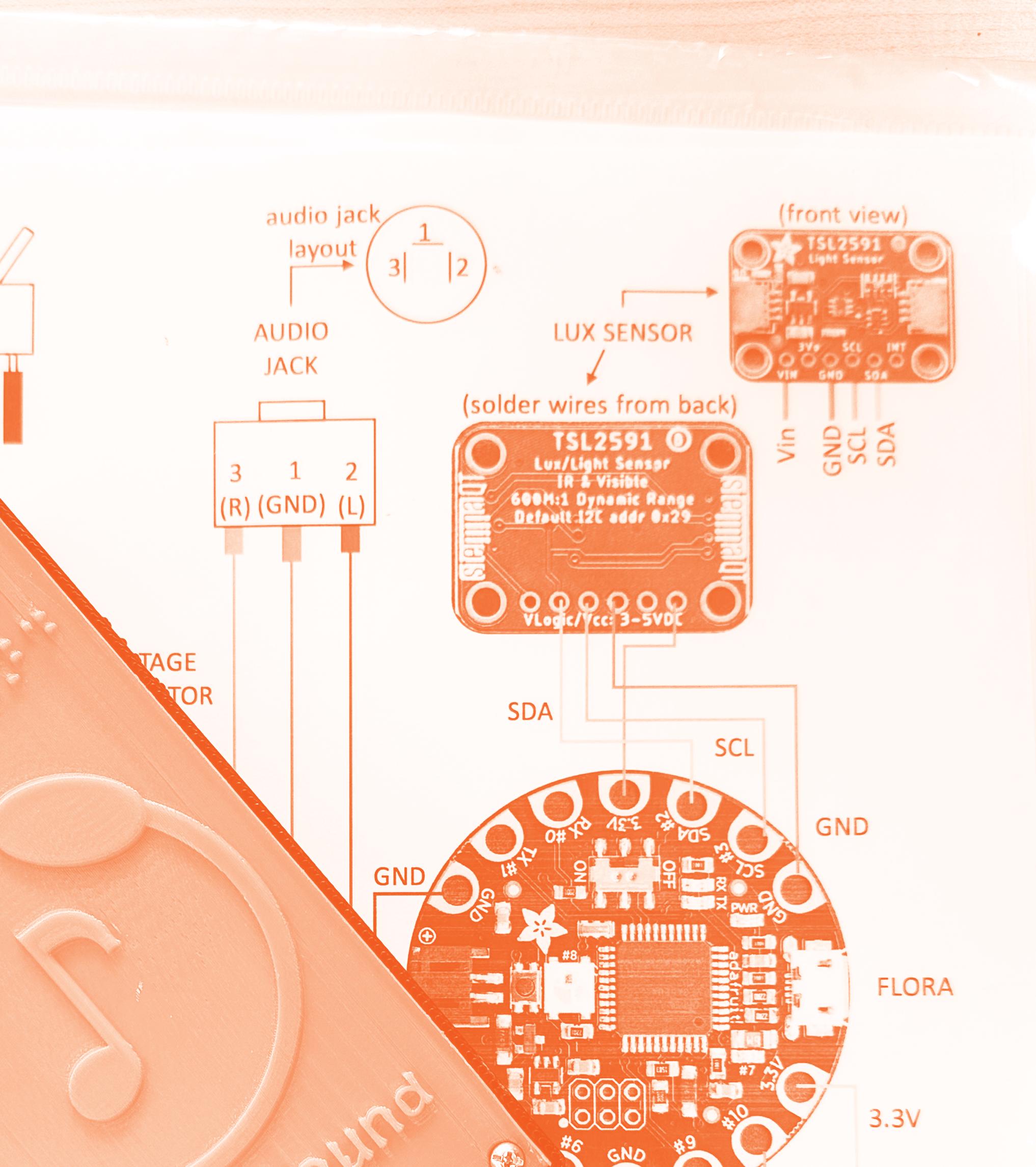
Wang and his team are utilizing a semantics approach to make the screen reader better at reading code in a comprehensible way. They also want to make the interface more interactive for
“We observed there is a problem, and it is actually something that is fairly easy for us as computer scientists to solve,”
Wang, who manages the technical side of the project with his team, has been working on this project since 2021. The project is funded by a three-year, $770,000 National Science Foundation
A group of students with visual impairments are testing the interface product. The team of researchers taught the students to program and use the interface so that they can test the
All testing and experiments for the product are conducted using single-case research design, which is an area of expertise for
Spring 2024 | Catalyst | UTSA 11


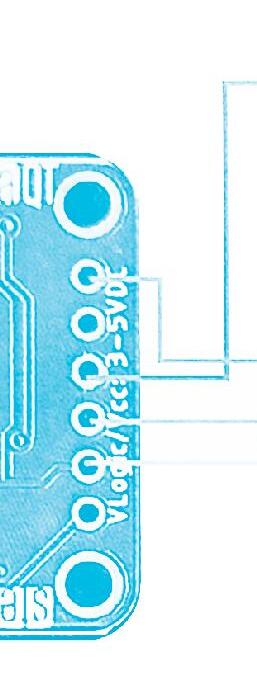
A group of students with visual impairments utilize a screen reader to read and debug code.
Neely is also working with John Quarles, a professor in the Department of Computer Science, on a project to develop an accessible virtual reality (VR) program. Work on this project, which is in collaboration with TEAMability at Morgan’s Multi-Assistance Center, started in January.
“The aim of the project is to determine the accessibility of VR for persons with various disabilities and evaluate our balanceimprovement techniques with them,” said Quarles, principal investigator for the project’s work at UTSA. His research focus includes the accessibility of virtual reality.
Previously, Quarles was part of a group of researchers from UTSA and UT Health that won a 2019 UTSA University Excellence Innovation and Impact award for their work on an augmentedreality system prototype to train first responders using simulated patients. Quarles helped organize UTSA’s Accessibility VR Game Jam in 2020, where participants developed a VR game demo that was accessible to persons with muscular dystrophy.
“I am passionate about promoting accessibility and services for persons with disabilities,” Neely said about her work with both Quarles and Wang. “I am also a former engineer, so I knew the power that technology could have on advancing accessibility and services.”
Tiffany Jensen, a senior physics major, is working with Lindsay Fuller, lecturer in the Department of Physics and Astronomy, on a project named LightSound. As a part of the project, Jensen has overseen the making of close to 30 light-sensitive electronic boxes for people with visual impairments to experience eclipses auditorily. The portable device uses a technique called sonification, which is the process of converting data—light intensity in this case—to sound. During a solar eclipse, the LightSound device emits a change in musical tone when the moon eclipses the sun and the light begins to dim. Users attach the device to headphones or a speaker.
Erika Tatiana Camacho, a professor in both the Department of Mathematics and the Department of Neuroscience, Developmental
UTSA | Catalyst | Spring 2024 12

Wei Wang
Assistant Professor in the Department of Computer Science
Wang, along with faculty members Kathy Ewoldt, Mimi Xie and Alberto Mestas-Nuñez, won an Innovation and Impact award in 2022 for their week-long summer camp where K-12 students with disabilities gained hands-on experience with things like Python programming, machine learning and computer vision using the example of autonomous driving.
John Quarles Professor in the Department of Computer Science
Quarles co-founded San Antoniobased MedCognition, a virtual-reality startup that created the affordable, portable and realistic simulator PerSim, designed to help health care workers maintain and improve their skills.
and Regenerative Biology, is using mathematical models to study photoreceptor neuronal degenerations, a common and incurable cause of human blindness.
Camacho is looking at the alteration in metabolic pathways that lead to photoreceptor degeneration in diseases like age-related macular degeneration (AMD) and retinitis pigmentosa, and she is trying to identify key mechanisms in the interactions between the rods, cones and retinal pigment epithelium (RPE) to slow down retina degeneration. She has been working on this project for almost 20 years.
“One of the things that I came to UTSA to do is to expand my research to experimental science as well,” Camacho said.
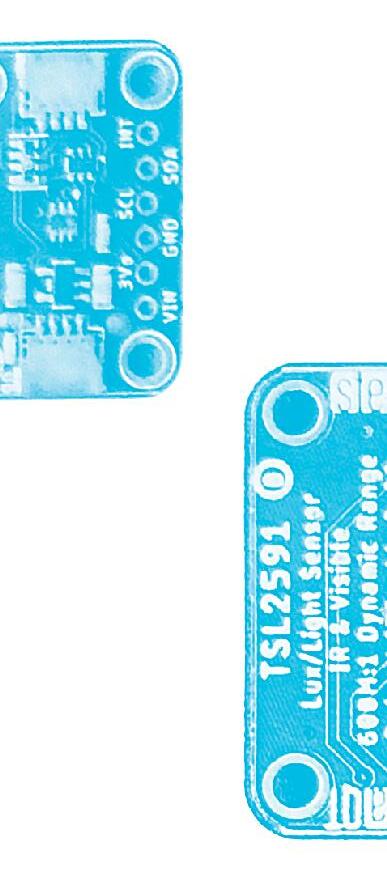
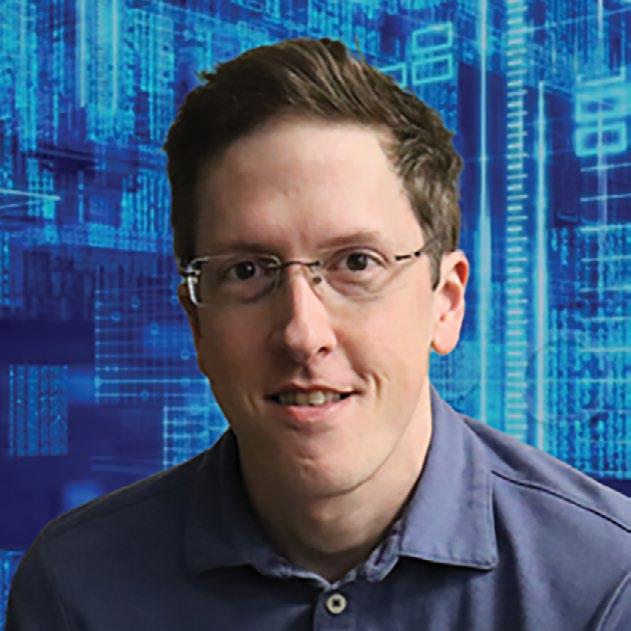
“The mathematical models will inform the experimental design, help identify key mechanisms and make predictions, while the experiments will inform the model development and subsequent iterations.”
Camacho hopes her research can assist in better understanding blindness and visual impairments and also help support the development of biologically effective treatment options.
“The impact of this research will hopefully be to allow individuals to be able to see, especially when their vision has deteriorated extensively,” Camacho said. “That’s what I hope to do with my research.”
Spring 2024 | Catalyst | UTSA 13
The COS Student Success Center’s Four-Year Plan
For the COS Student Success Center (SSC), success is not just about grades; it’s also about fostering a sense of belonging and identity.
By Md Mohsin
Success can mean being able to go to college. Success can mean admission to UTSA and passing classes. The meaning of success for students is diverse, and the path to success is often steep.
Some students face systematic obstacles when it comes to attending college and accessing resources. For others, engaging in a class is difficult. Sometimes, a roadblock to success is simply not having enough time.
The SSC collaborates with students to overcome these evolving or systematic barriers to success. The center allows students to be what they want to be. The SSC is a place for students to meet science mentors for peer mentorship, to connect with fellow students one-on-one or to join large events. Students can also engage with potential employers through SSC-sponsored gatherings such as Science Semana, an annual, week-long series of networking and skill-boosting opportunities. “We need to think of what we are doing with students beyond the classrooms to meet them where they are and help them focus on their area of study,” said SSC director Daniel Ramirez-Escobedo. “And so, that’s what we can offer and what we’re trying to do with our four-year plan and the SSC in general.”
In addition to the challenges of higher education, there are also opportunities for growth, emphasizes Ramirez-Escobedo.
“During the pandemic, students engaged virtually. Blending online and in-person modalities remains a tough choice. Do students still want to use virtual resources? Are online resources more of an archive? The nature of online resources can lead to issues of access and additional barriers for many first-generation students and those who would rather learn in the classroom versus online.” Sometimes, college resources can improve students’ time management with their workload. “For example, every department can offer their own tutoring and support measures,” said Ramirez-Escobedo. “If they get a low grade in their class, one solution is to offer tutoring. There are several groups on campus offering tutoring. And now we have to analyze which spaces the students are maximizing.”
The COS aims to do more than prepare students for internships by the end of their second year. “We want to say, [the four-year plan] is what you’re going to do to get focused on going from classroom to career within your next four years or three years, whatever timeline works for you,” said Ramirez-Escobedo. Once they are prepared academically, students then know what they want to do with their degree.
The four-year plan is designed to be effortless and engaging. “Parts of the four-year plan are things the students are already doing,” said Ramirez-Escobedo. “We’re just having them check in. If they were already going to go to, for instance, Science Semana; if they attend one event, they’re getting credit for it.”
UTSA | Catalyst | Spring 2024 14
The SSC prepares students for the professional world beyond the classroom through workshops on topics such as interview skills, résumé building and teamwork. “We have some events where our science mentors will say, ‘Let’s practice doing interview questions, or just talk to me about, for example, gravity in 30 seconds,’” said Ramirez-Escobedo. “Also, teamwork is something that’s huge; every employer is going to want to ask about teamwork. With our mentors here, we tell
students ‘you’re on a team of 30,’ so they have to learn what teamwork is just by being here.”
The SSC nurtures each student’s science identity. “We always wanted to promote that tagline ‘I am a scientist,’ and we tell students, ‘You are a scientist from day one,’” said RamirezEscobedo. “That’s blended into our four-year plan. For us, success is letting students know where they belong.”

THE SSC creates individual four-year plans for COS students. Each plan consists of checklists and activities that are grouped into the following categories: academic success, road to graduation, COS involvement, university engagement, career readiness and career launcher. These focus areas play a role in the success of students. For example, the career launcher encourages students to play an active role in their professional development by submitting job applications, attending company information sessions and participating in mock-interview sessions. Students receive help navigating their plans and are rewarded with cords and pins that can be worn at graduation. Students, find your four-year plan on RowdyLink! THE
CHECKLIST Academic Success Road To Graduation COS
Career Launcher ❏✓ ❏✓ ❏✓ ❏✓ ❏✓ ❏✓
SSC’S FOUR-YEAR PLAN
Involvement University Engagement Career Readiness
Spring 2024 | Catalyst | UTSA 15
Science mentors host a tabling event outside the Flawn Science Building to help students learn more about their majors and degree plan.
Faculty Spotlight: Fidel Santamaria
By Kendall Green
Fidel Santamaria is a computational neuroscientist and a professor in the Department of Neuroscience, Developmental and Regenerative Biology. Santamaria was born in Mexico City and studied physics at the Universidad Nacional Autónoma de México (UNAM). He completed his Ph.D. in computation and neural systems at the California Institute of Technology. After completing his postdoctoral training at Duke University, Santamaria brought his expertise to UTSA. “I came because there was an interesting group of neuroscientists working here that wanted to develop the field and a strong computational neuroscience interest,” he said.
“I like the process of discovery. I like pushing myself to learn new things, and I draw inspiration from many fields to then feed those ideas into neuroscience and back to engineering or vice versa,” said Santamaria. He was recently awarded a $2 million National Science Foundation grant to fund his work utilizing artificial intelligence (AI) and neuroscience to investigate history dependence of the nervous system. Santamaria is also affiliated with UTSA’s School of Data Science, collaborating with Dhireesha Kudithipudi, a professor of computer science and of electrical and computer engineering as well as the director of MATRIX UTSA AI Consortium for Human Well-Being. For this collaboration, Santamaria is one of the project leads for neuroscience-inspired artificial intelligence.
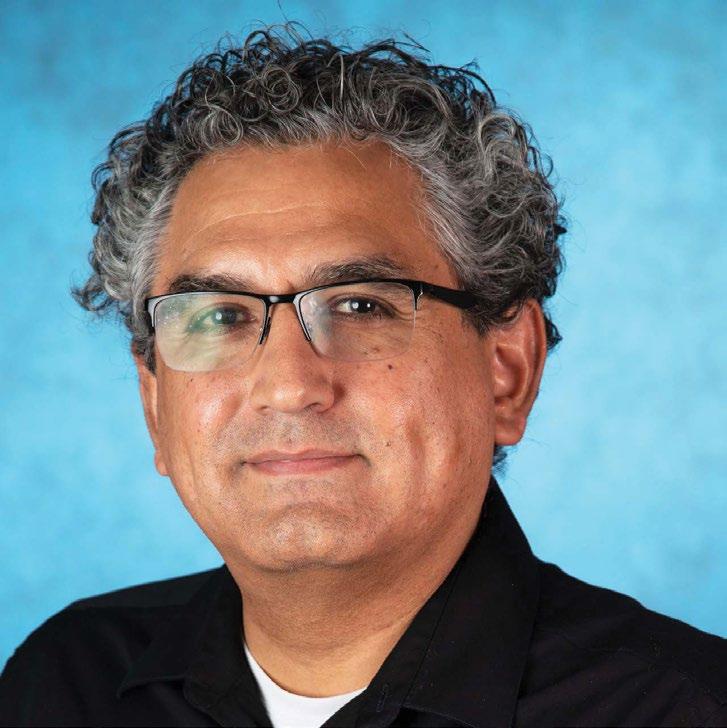
SANTAMARIA’S RECOMMENDED READING
Santamaria’s lab focuses on history dependence as a phenomenon of the nervous system, going beyond learning and memory. The nervous system’s ability to change reaction rates as a function of previous experience can be computed mathematically, facilitating understanding of what a healthy versus unhealthy nervous system looks like.
“We start from the neuroscience, we get the mathematical formulation for those processes, and we go back to see how we can implement neuron-inspired AI with these mathematical formulations and build hardware, like new machines, which can be energetically and computationally efficient,” Santamaria said.
According to Santamaria, life as a computational neuroscientist involves an abundance of collaboration and dividing his time between many different projects every day. His collaborators span the globe, hailing from the United Arab Emirates, Spain, Greece, Canada, South Carolina, Colorado, Tennessee, Oregon and here in San Antonio.
When Santamaria is not busy applying mathematics and artificial intelligence to the complexity of neurons, he enjoys many hobbies such as reading, listening to music and admiring art. When he has even more downtime, he enjoys playing his violin. The process of creativity often inspires his research. He draws inspiration from paintings such as the woodblock print The Great Wave off Kanagawa
The Pillow Book by Sei Shōnagon “That’s the book that connects you with humanity across time and space; it was written in the 10th century.”
The Garden of Forking Paths by Jorge Luis Borges “He understood that complexity was not in space but time.”
The Burning Plain by Juan Rulfo “Because life is complicated.”
by Japanese artist Katsushika Hokusai. The print depicts a wave, Mount Fuji and a boat. “That’s the best example of how evolution is; the nature of evolution is a dynamic equilibrium,” he said. “The wave is happening fast, and Mount Fuji is moving very slowly—that is a way to understand the complexity of evolution that applies at every scale of biology.” In addition to visual art, music also informs his work. For example, French musical composer Pierre Boulez inspired Santamaria to acknowledge the significance of silence itself as a note. “It is all the things that are outside your regular perception that could be of great importance,” said Santamaria. “All these things influence my work and how I perceive my science.”
UTSA | Catalyst | Spring 2024 16
Awesome Alum: Eric Johnson Chavarria
By Pelle Munoz
Eric Johnson Chavarria, Ph.D., is an alumnus of the University of Texas at San Antonio and has responded in his personal capacity. All views expressed here are his own.
Meet Eric Johnson Chavarria ’08, a UTSA Bachelor of Science in Physics graduate and a program director at the National Cancer Institute.
Growing up as a kid between Corpus Christi and San Antonio, Texas, Chavarria wanted to explore the vast world of scientific research. Television shows like CSI: Crime Scene Investigation and Bones were popular at this time, and they helped him develop an interest in forensic science. His growing passion for research and innovation would eventually lead him to apply for UTSA’s Maximizing Access to Research Careers (MARC) program. UTSA was an easy choice—the close proximity to home, a scholarship offered by the dean and the possibilities of the MARC program excited Chavarria.
MARC is a UTSA Honors research training program that develops participants as exceptional applicants and trainees for doctoral programs in the behavioral and biomedical sciences. Trainees are also automatically admitted to the UTSA Honors College. The MARC program is funded by the National Institutes of Health’s Training and Workforce Development division and was designed and implemented to increase the number of underrepresented faculty and top researchers nationwide.
Chavarria believes in UTSA’s dedication toward fostering growth among its faculty, students and research communities. He notes that UTSA has consistently been an institution that prioritizes education innovation, outreach and building tremendous opportunities for collaboration. “UTSA is grounded in historical progress and future commitment to advancing new areas of learning and emerging research through program development and community engagement,” he said.
During his time at UTSA, Chavarria had the opportunity to explore scientific research both locally and abroad. His undergraduate research was focused on the characterization of porphyrins binding to tubulin heterodimers. Using spectroscopy techniques in vitro, Chavarria examined the way porphyrin molecules, which play important roles in biological processes, interact with protein complexes called tubulin heterodimers.
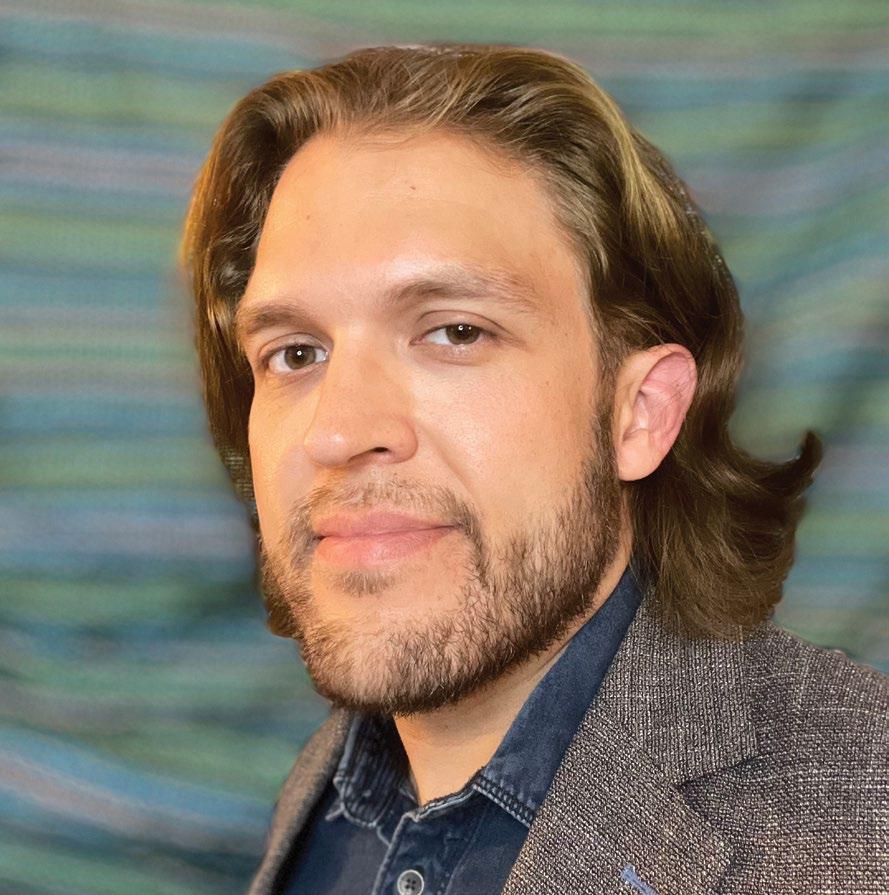
“The MARC program provided the training and knowledge that increased my confidence in pursuing advanced degrees in biophysics and computational biology,” he said.
Chavarria is now a program director at the National Cancer Institute, the federal government’s principal agency for supporting cancer research and training. His role involves supporting new emerging technology, physics and engineering-based approaches to address challenging questions in cancer biology research. He serves in the Biophysics, Bioengineering, and Computational Sciences Branch within the Division of Cancer Biology.
“I’m a strong advocate for open innovation approaches including innovation labs, challenge prize competitions, and research advocate engagement to encourage broad participation and diverse perspectives toward advancing research discoveries,” he said.
Chavarria looks back fondly on his experiences at UTSA and is grateful for the mentorship he received as an undergraduate. Ann Eisenberg, UTSA professor emeritus and former Honors College administrator, was a defining figure of support during Chavarria’s Honors experience. Gail Taylor, associate program director for the Research Initiative for Scientific Enhancement (RISE) program, provided valuable knowledge and guidance when Chavarria was applying to graduate schools and fellowships to fund his research.
Chavarria credits his personal and professional development style to Lorenzo Brancaleon, his undergraduate adviser. “I was surprised to see the many hats that Dr. Brancaleon wore throughout the day,” Chavarria said. “He is an instructor, researcher, collaborator, husband, father and more. Each role requires its own patience, approach and commitment. This impacted me both personally and professionally in how I worked to develop my own time management style and being present in the moment.”
Spring 2024 | Catalyst | UTSA 17
#ThisIs WhatA Scientist Looks Like
UTSA | Catalyst | Spring 2024 18
Canaan Eggers
By Adine Bahambana
Growing up as a “military brat,” Canaan Eggers was always interested in serving his country. He frequently moved with his family to different cities–including a stint in San Antonio–and attended high school in Germany. His dreams of serving as a U.S. Air Force pilot brought him back to San Antonio. A friend who was majoring in cyber security at UTSA persuaded him to become a Roadrunner.
“At the time, the guidance that I was receiving from a lot of my peers, and a lot of people I was hearing from in the Air Force, was that technical degrees such as computer science are really desirable,” Eggers said.
Eggers is now a senior computer science major and a leader in the ROTC program. “My passions are leading and empowering [people] to join the armed forces and get our message out there, so finding the balance between computer science and ROTC is a struggle, but it’s a blessing to be learning that so early on.”
Eggers has earned many titles over the past four years. As the squadron commander for UTSA’s chapter of the Arnold Air Society, he leads a group of cadets in community service projects. The Arnold Air Society is a service organization that emphasizes cadets becoming leaders in their community.
As a cadet, Eggers learns expeditionary skills on a military base— skills that not only sharpen his physical abilities but also refine skills he can use in a professional setting. “ROTC, especially here in San Antonio, offers so many opportunities for professional development,” Eggers said. “As part of our classroom portion of ROTC, we make presentations two or three times every semester, which most college students don’t necessarily have to do. I’m getting a lot more experience speaking up in front of people, presenting my ideas and having to defend them, which I’m really thankful for.”
Eggers attributes much of his growth and success as a cadet to his mentors, 2nd Lieutenant Mathew Jewett, a UTSA alumnus and Eggers’ first flight commander when he joined the ROTC, and Lieutenant Colonel Chester Peyton, a C-17 pilot who has been

Grow where you’re planted. Find every single opportunity available, find extracurriculars. If you find one that you’re not a good fit for, find another one, and explore everything they have to offer to you. Move laterally for as far as you can until your root can go further down.
a wellspring of knowledge to Eggers ever since he was in high school. Their mentorship contributed to helping Eggers succeed as a cadet and later as a flight unit commander. In fall 2023, Eggers was part of a team that teaches novice cadets fundamental military competencies. Today, he serves as the commander of a Public Affairs flight that manages media content for their detachment. Eggers looks forward to a long military career. He plans to explore the intersection of computer science and the armed forces to learn about military intelligence and to understand cyberspace warfare.
Spring 2024 | Catalyst | UTSA 19
Isaiah Walker
by Kimberly Baker
Isaiah Walker is a junior Honors College student and a student athlete whose college journey is not just about hitting home runs, but also about mastering differential calculus and dreaming about soaring the skies as a pilot.
Walker’s story is a testament to the power of passion and unwavering determination. He works hard to overcome the challenges associated with balancing a grueling athletic schedule and demanding mathematics classes. He also participates in extracurricular activities such as Fellowship of Christian Athletes (FCA), and he helped found the UTSA chapter of Black Athletes Striving for Excellence (BASE). He wanted to gather athletes from all campus sports to build a community.
When it comes to his career, Walker is following in his uncle’s footsteps. His uncle earned a mathematics degree before becoming a commercial pilot, inspiring Walker to do the same. “I really look at mathematics as problem-solving, so I like the computational mathematics of calculus, algebra and differential equations, which requires that I follow a process,” he said.
Walker said that although mathematics is a tough subject, his professors are passionate and supportive in helping students overcome the challenges and in contextualizing the material to make it more understandable. They realize that it is a difficult major, and they work hard to help him and his fellow students succeed.
While balancing the time commitments necessary for both high academic standards and sports excellence is difficult, Walker believes
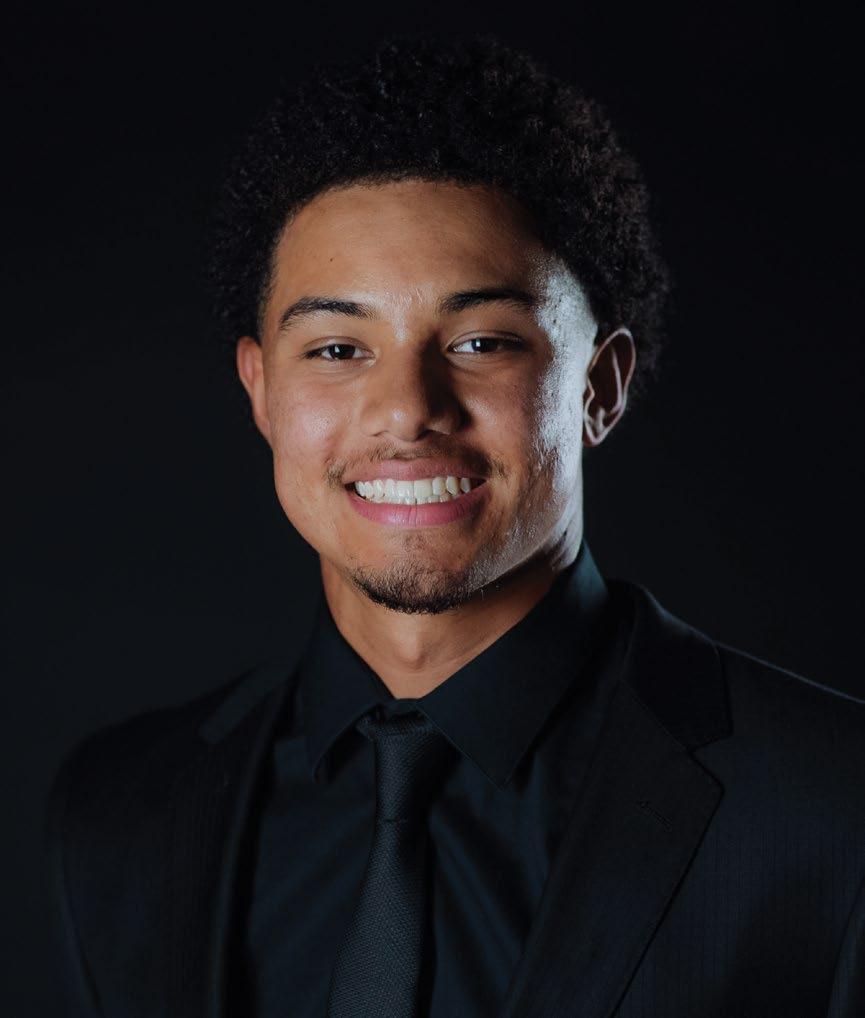
If you value what you do, if it means the world to you, then you do what it takes to get the job done, even when you struggle.
that both are entirely worth it. “I can see my growth as a man the past two years in the program,” he said. He credits the adversity he has faced in his baseball career for much of his growth. “I feel stronger, and it allows me to deal with the pressures in the outside world.”
The summer after his freshman year, Walker attended a two-week aviation internship where he earned his student pilot’s license and completed his first solo flight. “The internship gave me a glimpse of what the future would be like after I finish with baseball and school here,” he said.
UTSA | Catalyst | Spring 2024 20
Karla Alexandre
By Amanda Korsah
Even in middle school, Karla Alexandre had a great interest in biology and wanted to know more about how the brain and body work. From growing up in a small town in Texas to becoming a student scientist with a passion for neurological research, first-generation college student Alexandre’s story is an inspiration.
Alexandre’s experience as a student scientist includes being involved in everything from presenting research last summer for the Louis Stokes Alliance for Minority Participation (LSAMP) program at The University of Texas at El Paso to studying nanoscience and nanotechnology for the Learning, Excellence and Academic Preparedness in STEM (LEAPS) program at Laredo College. Alexandre is also a McNair Scholar and presented her research through the McNair program at a Baylor University conference last summer.
Alexandre is currently a researcher in a neuroscience lab under Matthew Wanat, associate professor in the Department of Neuroscience, Developmental and Regenerative Biology, where she is investigating how an acute stress event can affect Pavlovian conditioning of rats and whether there are sex differences in the results.
Alexandre joined UTSA as a transfer student after earning her associate degree at Laredo College and is now a senior majoring in biology. Alexandre became a Roadrunner because UTSA provided a unique environment that is inviting to all. “UTSA makes a great effort to make all students feel included,” said Alexandre. “The welcoming nature of the university has been incredibly supportive.”
Alexandre appreciates the variety of ways UTSA supports students’ academic journeys while providing them with skills and resources to thrive in interdisciplinary environments. “It is a very STEM-focused campus, so it has been able to provide me and other students with a great deal of extra resources and tutoring for my specific degree,” she said. “It has been very helpful.”
Alexandre hopes her story and passion for neuroscience research will inspire more people to consider becoming a student scientist at UTSA. After graduation, Alexandre is interested in either attending medical school to become a specialized physician or continuing with graduate studies to earn a master’s and Ph.D. in neuroscience.
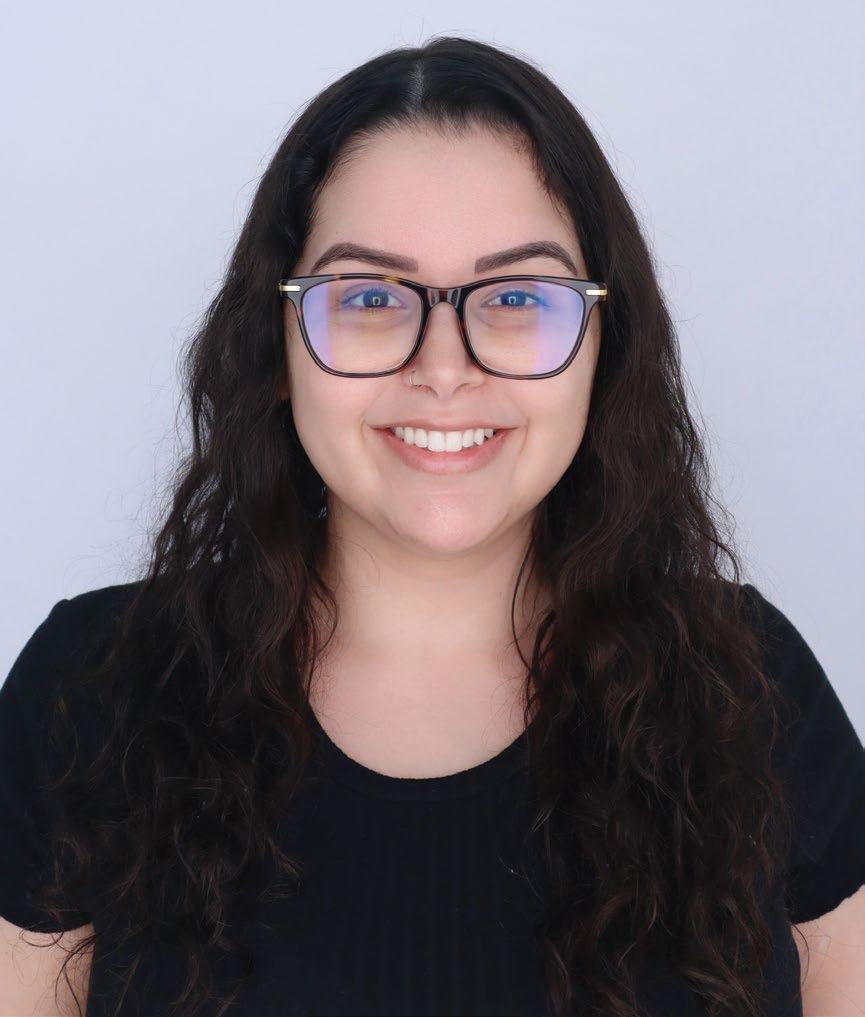
Pavlovian conditioning is a type of conditioned learning that occurs
when a subject’s instinctive response, such as when the eye automatically reacts to a puff of air by blinking, is paired with a neutral stimulus, such as when a certain sound is used to induce a similar response, even when the puff of air isn’t present.
Alexandre’s advice to incoming students interested in studying biology or neuroscience is to take it slow and enjoy the present. “Take your time. You do not have to rush to the finish line. Take a step back, and enjoy the moment.”
Spring 2024 | Catalyst | UTSA 21
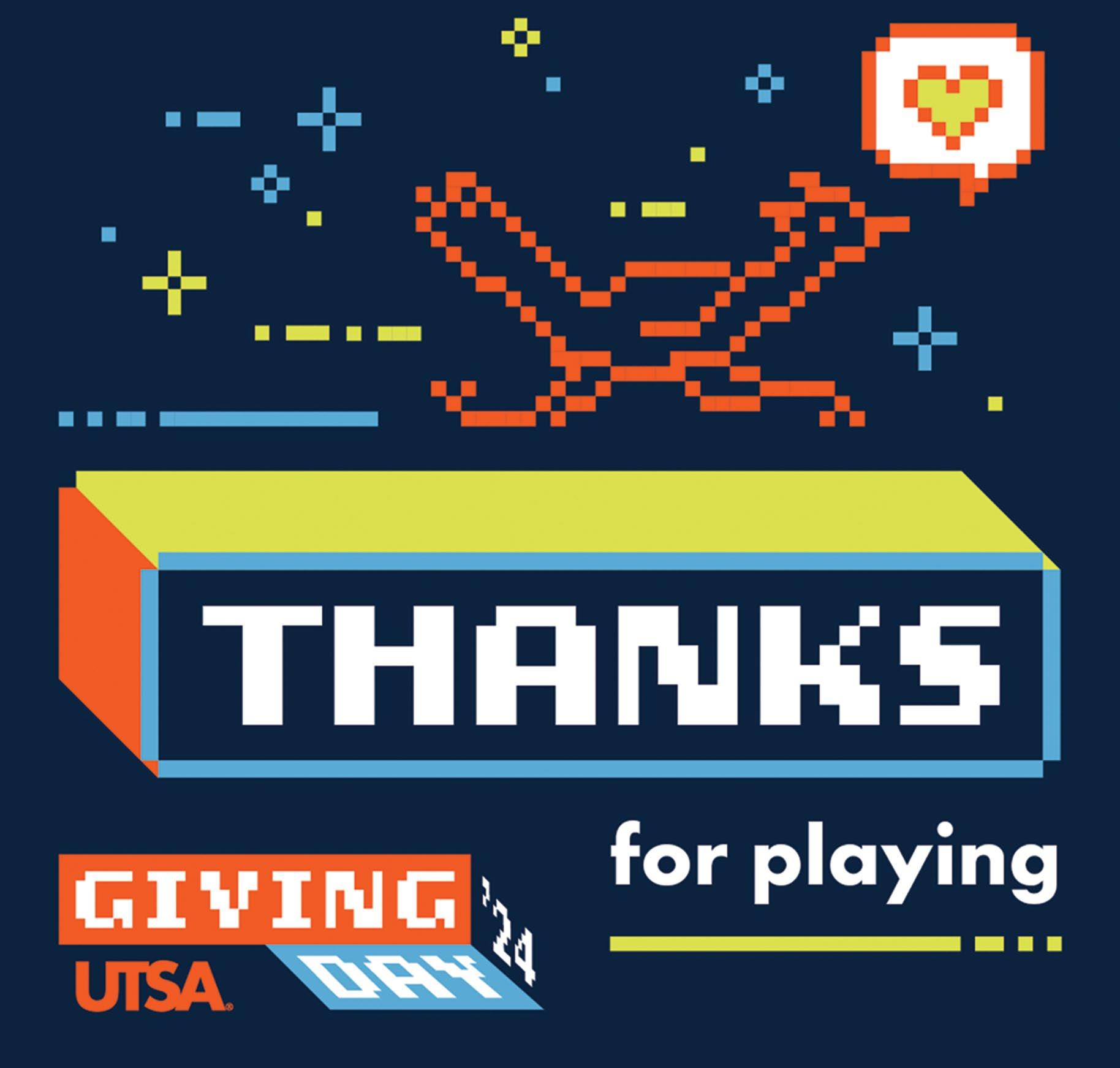
THANK YOU FOR PARTICIPATING IN GIVING DAY 2024! Missed the big event? There is still time to give! Learn more at givingday.utsa.edu. UTSA | Catalyst | Spring 2024 22

The College of Sciences raised more than $53,285 from gifts made during 2024 Giving Day!

Spring 2024 | Catalyst | UTSA 23
Peek Inside Two Research Core Spaces
Spearheaded by research core director Ana Stevanovic, the KLEBERG ADVANCED MICROSCOPY CENTER (KAMC) is a premier open-access facility offering cutting-edge technology in electron microscopy and advanced material characterization. The center’s mission and expertise span a multitude of research fields, including nanotechnology, chemistry, chemical engineering, additive manufacturing, geology, planetary sciences, geology, materials and life sciences.
The KAMC serves as both a research hub and a training ground for future laboratory leaders. Under a U.S. Department of Energy grant, undergraduate students collaborate between the Extreme Environments Laboratory, led by Elizabeth Sooby, associate professor in the Department of Physics and Astronomy, and KAMC to analyze materials produced using additive manufacturing techniques, specifically focusing on properties pertinent to nuclear reactor performance. The center also hosts summer students as a part of the Consortium on Nuclear Security and Technologies (CONNECT) research program for undergraduates.
KAMC collaborates with industry, nonprofit leaders and local start-ups to address research and development challenges. In partnership with the Southwest Research Institute, KAMC conducts nanoscale imaging and chemical characterization of planetary analogs and extraterrestrial samples; explores lunar simulants, Apollo-era soils and space weathering effects; and analyzes carbonaceous chondrites and samples from the asteroid Bennu returned by NASA’s OSIRIS-REx mission.
At the core of KAMC’s capabilities is the first aberration-corrected electron microscope in
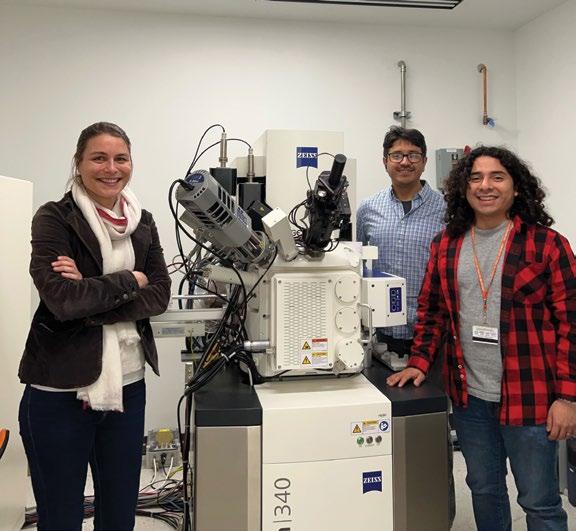
the United States, a JEOL-brand, model JEMARM 200F, which boasts 0.78 Å resolution for identifying individual atoms. The microscope, nicknamed Helenita, was purchased with funds from the $1.2 million gift from the Robert J. Kleberg Jr. and Helen C. Kleberg Foundation in 2010. The center also features a focused ion beam (FIB) instrument for transmission electron microscopy (TEM) sample preparation, 3-D imaging, chemical mapping and various scanning electron microscopes. Analytical studies are supported by high-resolution, multifunctional X-ray diffraction spectroscopy, Raman microscopy and atomic-force microscopes. The computational laboratory is equipped with a suite of software tools like Gatan Microscopy Suite, JEMS, ImageJ, ASTAR, ICDD diffraction database, and Dragonfly, as well as various offline tools.
The UTSA GENOMICS CORE (pictured at right) is a fee-for-service facility for Next Generation Sequencing (NGS) applications to study gene expression and genetics. The core has a particular focus in single-cell genomics as well as spatial transcriptomics and proteomics, allowing researchers from UTSA or other
organizations and institutions from across the United States to decode the complex driving forces behind development and disease on a cellular level. Led by associate director Sean Vargas, the core works closely with students and staff to train and consult on experimental design to facilitate cutting-edge research.
Some of the core’s major instrumentation includes a NanoString Digital Spatial Profiler for analyzing 20,000 genes or 250 proteins from whole-tissue sections; the 10x Genomics Chromium system for the automated preparation of up to 10,000 individual cells per sample for sequencing; and a NanoString nCounter MAX to measure gene expression for up to 800 genes using PCR-free hybridization and signal generation.
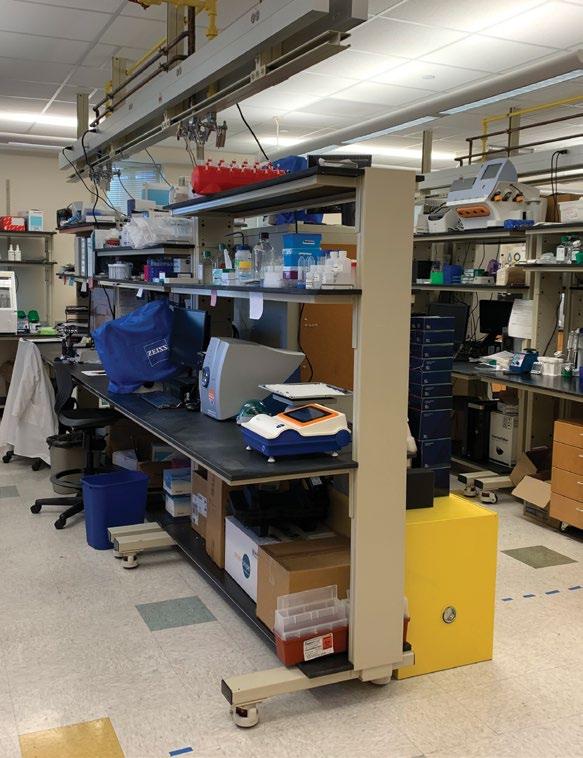
LEARN MORE ABOUT THE CORE AT research.utsa.edu/cores/genomics/.
UTSA | Catalyst | Spring 2024 24
Left to right: The KAMC’s Ana Stevanovic (director), Alejandro Morales-Betancourt (student intern), Andrei Hernandez-Robles (research engineer).
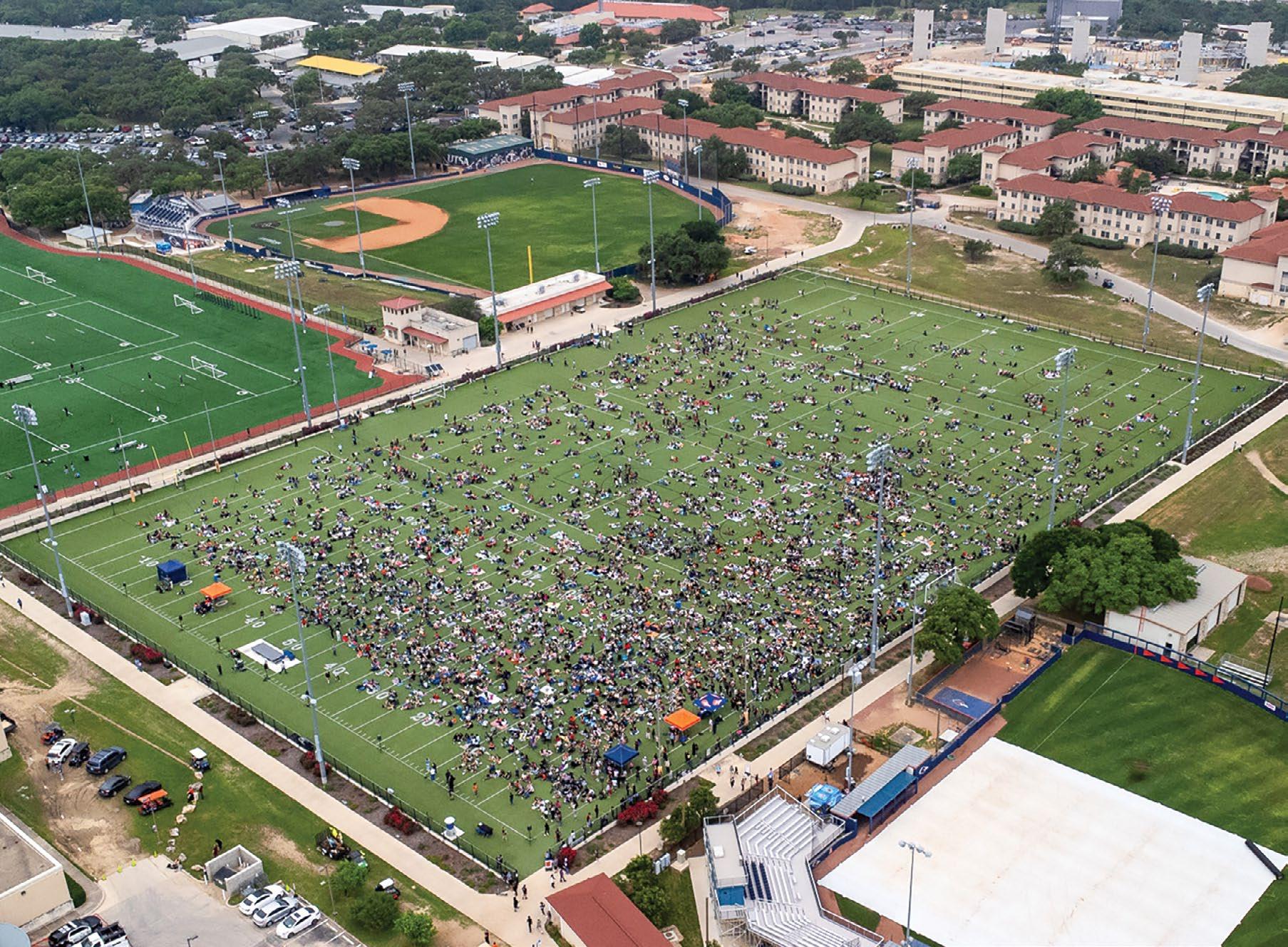
Pop Quiz: In April, the Roadrunner community gathered on campus to watch the total solar eclipse. The College of Sciences determined the size of the group using AI to count the number of people in a photo taken by a drone. Approximately how many people attended the event? Flip to page 3 to check your answer.
Non-Profit Org. U.S. Postage PAID San Antonio, TX Permit No. 2474
The University of Texas at San Antonio One UTSA Circle San Antonio, Texas 78249








































